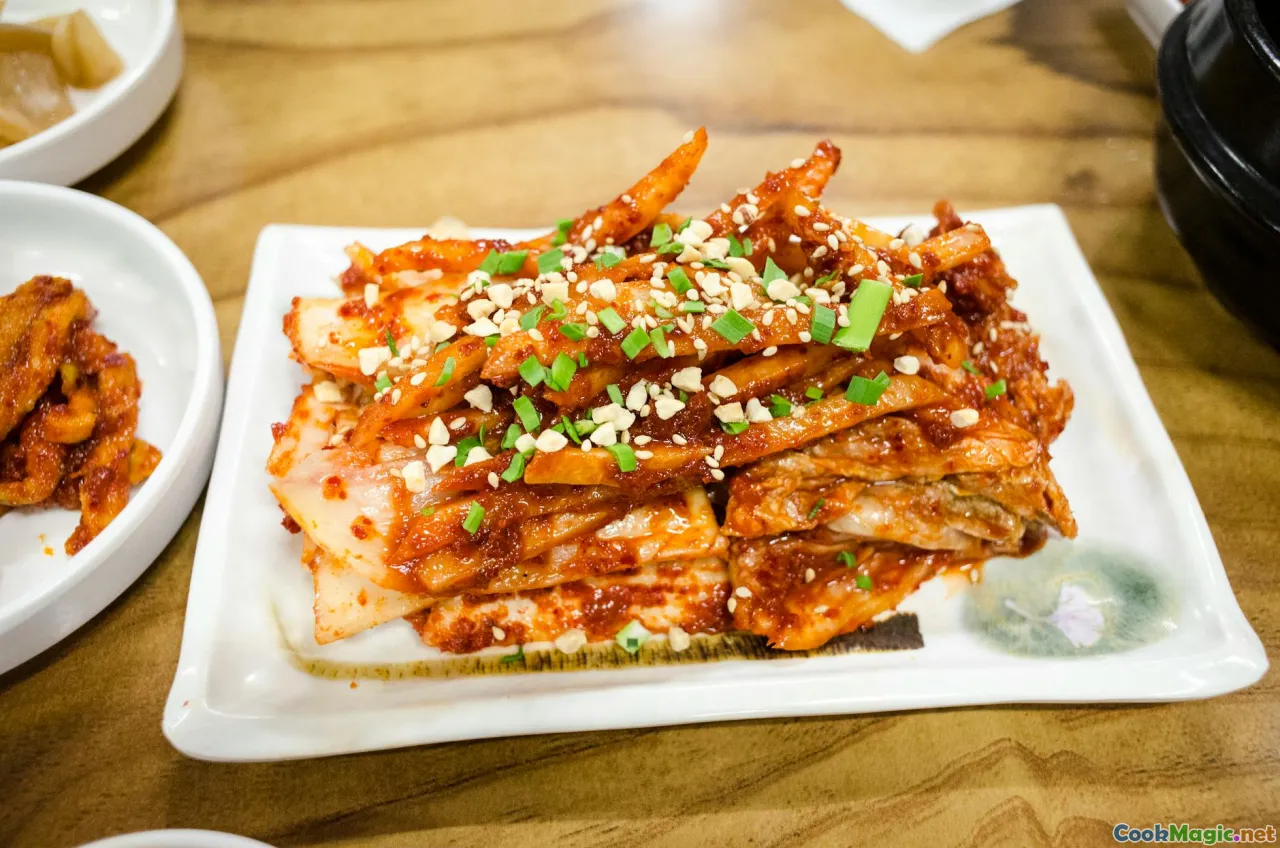Fermentation Basics for Plant Based Sauces
8 min read Unlock the secrets of fermentation to craft vibrant, probiotic-rich plant-based sauces that elevate vegetarian cuisine with depth and flavor. April 28, 2025 13:55
Fermentation Basics for Plant Based Sauces
Imagine a kitchen where every jar bubbling with life transforms humble ingredients into complex, tangy, and deeply flavorful sauces. Fermentation, an ancient culinary art, is experiencing a renaissance among vegetarian chefs and home cooks alike. It’s more than just a preservation method; it’s a gateway to a world of umami richness, probiotic health benefits, and culinary creativity.
In this article, we’ll embark on a flavorful journey into the fundamentals of fermenting plant-based sauces. Whether you’re a seasoned fermenter or a curious newcomer, understanding the science, techniques, and cultural significance behind fermentation will help you craft vibrant, healthful sauces that elevate your vegetarian dishes.
The Cultural and Historical Significance of Fermentation
Fermentation is as old as civilization itself. From the tangy kimchi of Korea to the fermented bean pastes of China, cultures worldwide have harnessed microbial magic to preserve and enhance their foods.
In traditional Asian cuisines, fermented soybean sauces like soy sauce, miso, and doenjang serve as pillars of flavor, imparting savory depth and umami. Similarly, in Europe, fermented condiments such as mustard, sauerkraut, and kefir have long been valued for their preservation qualities and health benefits.
For vegetarians, these fermentations offer a treasure trove of flavors and textures, transforming simple plant ingredients into complex sauces that add depth and character to every dish.
Why Ferment Plant-Based Sauces?
Fermentation unlocks a multitude of benefits for plant-based sauces:
- Enhanced Flavor Profile: Fermentation introduces tangy, umami, and sometimes funky notes that are impossible to achieve through cooking alone.
- Improved Digestibility: Microbial activity breaks down complex plant molecules, making nutrients more accessible and easing digestion.
- Probiotic Power: Fermented foods are rich in beneficial bacteria, supporting gut health.
- Natural Preservation: Fermentation extends shelf life without artificial preservatives.
For vegetarians, these advantages mean creating sauces that are not only flavorful but also nourishing and long-lasting.
The Science of Fermentation: Microbes and Metabolism
At the heart of fermentation are microbes — primarily bacteria, yeasts, and molds — that convert sugars and other compounds into acids, gases, and alcohols.
In plant-based sauces, the dominant players are lactic acid bacteria (LAB), which ferment sugars into lactic acid. This acidification creates an inhospitable environment for spoilage pathogens, preserving the food and developing characteristic flavors.
Understanding the microbial ecosystem helps in controlling fermentation, ensuring safety, and achieving desired taste profiles.
Key Ingredients for Fermenting Plant-Based Sauces
Successful fermentation begins with selecting the right ingredients:
- Vegetables and Legumes: Think soybeans, chickpeas, zucchini, or cabbage — rich in sugars and nutrients.
- Salt: Acts as a microbial regulator, favoring beneficial bacteria and inhibiting spoilage organisms.
- Water: Preferably filtered or non-chlorinated, to avoid inhibiting microbial activity.
- Fermentation Starters (Optional): Commercial or homemade starter cultures can jumpstart fermentation, but many plant-based ferments rely on wild microbes.
Tips for Ingredient Preparation
- Cleanliness: Always use sanitized utensils and containers to prevent unwanted bacteria.
- Chopping: Finely chop or grate ingredients to increase surface area and facilitate microbial access.
- Salt Ratio: Typically, 2-3% salt by weight of the ingredients; too little can lead to spoilage, too much can inhibit fermentation.
Step-by-Step Guide to Fermenting Plant-Based Sauces
1. Preparing the Base
Start by blending or chopping your chosen vegetables or legumes into a smooth or chunky mixture, depending on your desired sauce texture. Add salt and, if desired, spices or herbs.
2. Packing and Submerging
Pack the mixture tightly into a clean jar or fermentation vessel, pressing down to remove air pockets. Cover with a weight or a clean cloth to keep ingredients submerged, as exposure to oxygen can lead to mold.
3. Fermentation
Allow the mixture to ferment at room temperature (65-75°F or 18-24°C). The duration varies from a few days to several weeks, depending on the recipe and flavor preferences.
4. Monitoring
Check daily for signs of fermentation: bubbling, slight tang, and a pleasant sour smell. Remove any mold or scum that forms on the surface.
5. Storage
Once your sauce reaches the desired flavor, transfer it to a sealed container and refrigerate. The cool environment slows microbial activity, preserving the sauce.
Flavor Development and Personalization
Fermentation is an art as much as it is a science. The flavor evolves over time, developing complexity and depth. Some fermenters prefer a mild tang; others seek a more pronounced funk.
Experiment with ingredients — adding garlic, ginger, chili, or herbs — to craft unique profiles. Aging the sauce longer can deepen flavors, much like a fine wine.
Troubleshooting Common Issues
- Mold Growth: Usually a surface issue; remove mold and ensure ingredients stay submerged.
- Off Smells or Colors: Discard and start anew; contamination may have occurred.
- Lack of Bubbles: Patience is key; fermentation times vary.
Personal Reflections and Tips
From my own kitchen, I’ve found that patience and attention to detail are essential. The first few attempts might be unpredictable, but with experience, you’ll learn to read the signs of a healthy ferment.
One of my favorite projects involved fermenting a spicy harissa-style sauce from roasted red peppers, garlic, and spices. The transformation from sweet roasted peppers to a tangy, probiotic sauce was astonishing. It became a staple in my vegetarian meals, adding umami and depth.
Embracing the Fermentation Journey
Fermentation is a celebration of microbial life and culinary tradition. It invites you to slow down, observe, and participate in a centuries-old craft. For vegetarians, it’s a path to creating sauces that are not only flavorful but also nourishing, preserving cultural heritage and supporting gut health.
So, gather your ingredients, sterilize your jars, and let the magic of fermentation turn simple plants into complex, vibrant sauces that tell a story — your story.
Happy fermenting!









